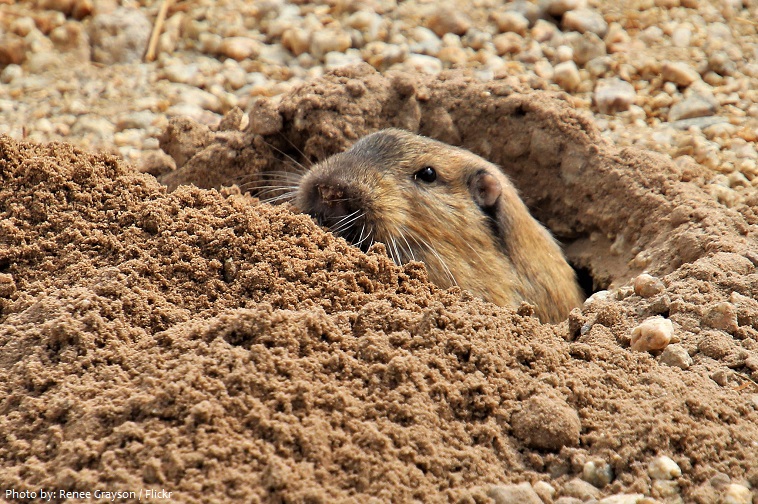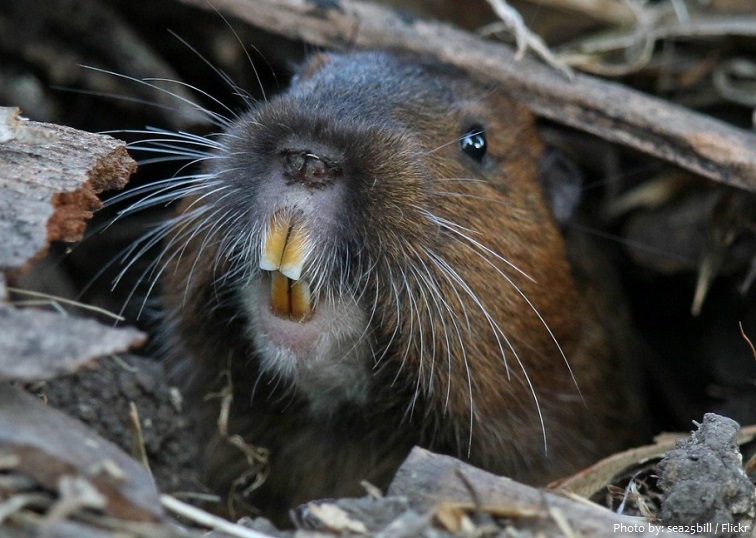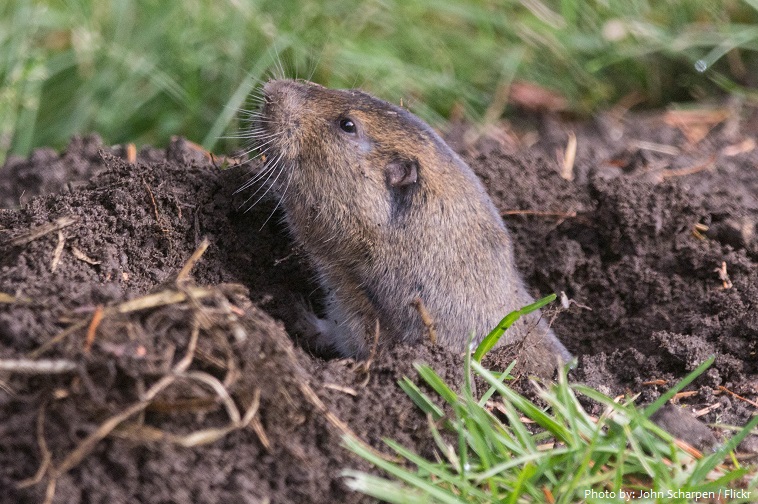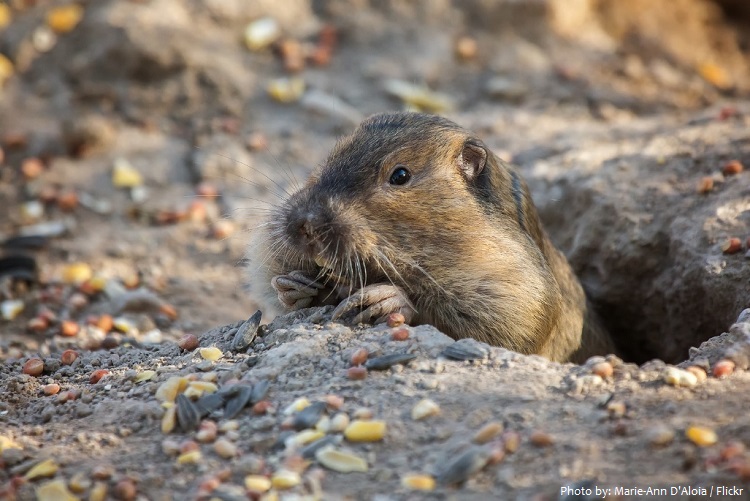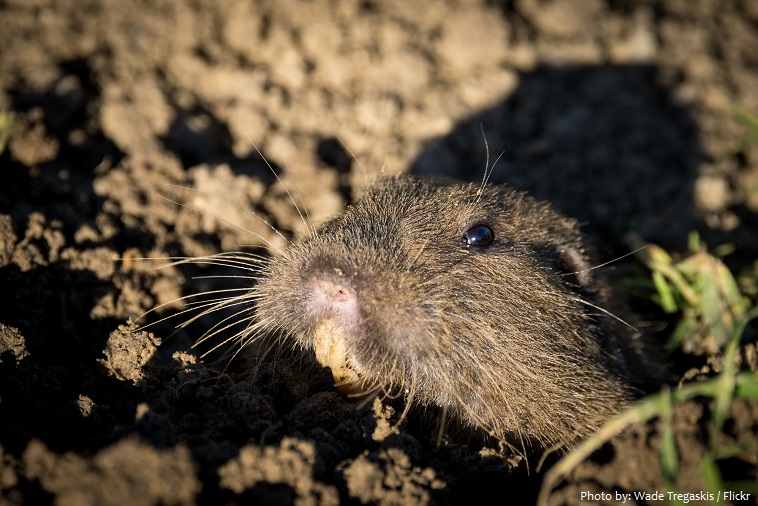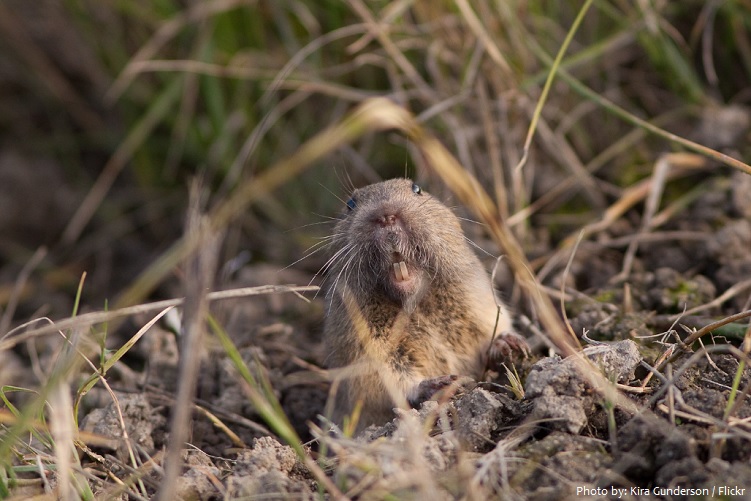Pocket gophers, commonly referred to as just gophers, are burrowing rodents of the family Geomyidae.
There are about 35 species of gophers.
All species are endemic to North and Central America.
Gophers live in prairies, woodlands, coastal areas and mountains – anywhere with soft, moist soil.
The gopher has an average lifespan of 1 to 3 years in the wild.
Most pocket gopher species are 12 to 35 cm (4.7 to 13.8 inches) in body length and weigh around 200 g (0.5 lb). A few species of Central American forms reach very large size, almost 1 kg (2.2 lb). Within any species, the males are larger than the females, and can be nearly double their weight.
They have small eyes, big teeth and a short, hairy tail, which they use to feel around tunnels when they walk backwards. Most gophers have brown fur that often closely matches the color of the soil in which they live.
Gophers are commonly known for their extensive tunneling activities and their ability to destroy farms and gardens.
They are diurnal meaning that they are active during the day.
Gophers are fossorial, spending most of their time underground.
All pocket gophers create a network of tunnel systems that provide protection and a means of collecting food. They are larder hoarders, and their cheek pouches are used for transporting food back to their burrows.
Pocket gophers dig primarily with their front claws and use their front teeth to cut roots and loosen soil or rocks. When moving backward through tunnels, they arch the tail so that its sensitivetip touches the tunnel wall. This allows the pocket gopher to run backward nearly as fast as it can forward.
Their underground burrowing systems can extend from 18.5 to 185 square meters (200 to 2,000 square feet) and contain multiple gopher mounds.
Tunnel entrances can be identified by small piles of loose soil covering the opening. Burrows are in many areas where the soil is softer and easily tunneled. Gophers often visit vegetable gardens, lawns, or farms, as they like moist soil. This has led to their frequent treatment as pests.
Pocket gophers eat plant roots, shrubs, and other vegetables such as carrots, lettuce, radishes, and any other vegetables with juice.
They do not hibernate, and stems, roots, and tubers that they hoard in storage chambers enable them to survive the winter.
Pocket gophers are solitary outside of the breeding season, aggressively maintaining territories that vary in size depending on the resources available.
The breeding season varies, but births typically occur from March through June. The gestation period is usually 18 to 25 days , but periods as long as 51 days for the plains pocket gopher have been reported. Each litter typically consists of 2 to5 young, although this may be much higher in some species. The young are born blind and helpless, and are weaned around 40 days old.
The extensive burrowing activity of pocket gophers moves a lot of soil, which frees up nutrients for plants and helps in plant distribution through movement of plant parts, such as tubers and roots.
They are also important ecologically as part of food chains, being consumed by owls, hawks, snakes, weasels and coyotes, among others.
Native Americans also have used them as a food source and they are considered a delicacy in parts of Latin America. On the other hand, the herbivorous behavior of pocket gophers also has led to their damaging agricultural crops and trees, and they are widely considered agricultural pests.
Despite the havoc they can wreak, gophers also do great things for the environment. The excrement and dried vegetation that they leave in their burrows acts as natural fertilizer. However, most people consider them an annoyance due to the mess and unsightliness they can cause. A single gopher can create multiple tunnels in just one day, wrecking your garden and damaging your crops.
The closest relatives of the pocket gophers are the members of the rodent family Heteromyidae, the pocket mice, kangaroo mice, and kangaroo rats.
The word “pocket” is in animal’s name becouse of the unusual fur-lined cheek pouches of these animals. These pouches, which extend from the side of the mouth well back onto the shoulders, are used for transporting food.
The origin of the word “gopher” is uncertain – French gaufre, meaning waffle, has been suggested, on account of the gopher tunnels resembling the honeycomb-like pattern of holes in a waffle – another suggestion is that the word is of Muskogean origin.

